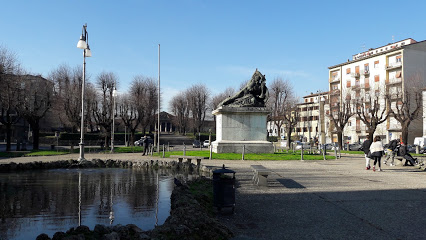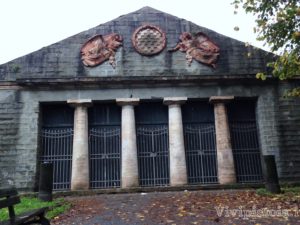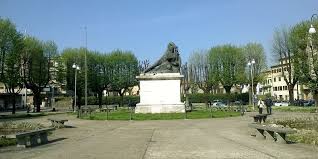A portrait of an unknown 18th-century author, preserved in the Civil Museum, shows how the square at that time was only a vast grassy area Prato was the meeting place, and the walking and horse races that were disputed during the patron saint's celebrations. In fact, in the early years of the last century, the new arrangement that, according to the Tolome Project, in those years at the head of the Civil Administration and author of one of the first city guides (VI), is due to its transformation into a vast amphitheater surrounded by steps with Patheon on the west side dedicated to the most citizens Illustrious in Pistoia. This subject, which is fully responsive to the taste of the times and, to a lesser extent localized, recognizable even in the contemporary achievements of Niccolo Puccini, has achieved those romantic situations that ignited the minds of the city's most enlightened conscience. The Pantheon, designed by architect Cosimo Rossi Milucci, was designed to perpetuate figures of statues and inscriptions such as Clement IX or Cardinal Fortigore and had to open up to a wide hall of classical derivation. Compared to the initial project, the building has been deeply modified and assumes the side that it still holds today.
At the end of a vast tree-lined area, the Pantheon Rooms, located on the top floor of the Bertieri - Kiosks - hosted a concert cafe until the early years of this century, thus preserving the character of the city's meeting which was always characterized by this square.
In the first half of this century, due to its important public role, the square underwent new transformations, including the arrangement of the monument to the fall by the sculptor Silvio Cannevari.
This work, given the classical statues, commemorates the citizens who died in their homeland during the First World War.
In those same years, it was built, in an area that once belonged to the Franciscan monastery, the headquarters of the Fascist Youth Organization, the fruit of the difficult cooperation between J. Architects. Micheleucci and R. Vagoni, the latter responsible for the restoration of the contemporary building. Worship.
Over the centuries, the square, still a public park, has changed its name several times so that the Pistoies continue to call it in different ways. In the 13th century, it was called Pratum Comunis, at the time of French domination it was called Foro Buonaparte, at the end of the 19th century it was named Giuseppe Mazzini while in 1926, the year of Franciscan celebration, it was like other times in the past centuries.




